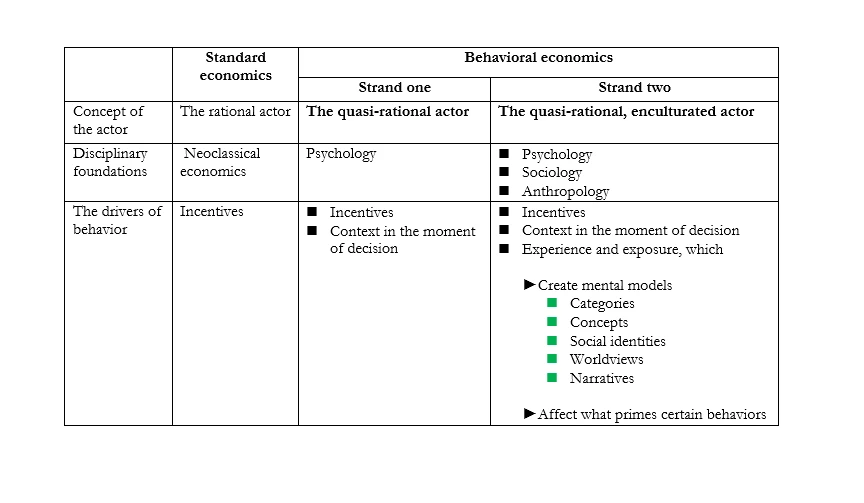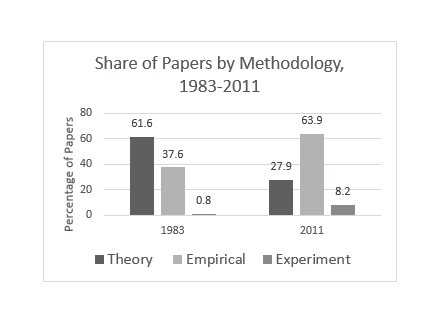Could a parent’s decision to vaccinate a child depend on a free bag of lentils? The premise seems implausible:immunization can be a matter of life and death, and a bag of lentils is worth only a dollar. Yet a randomized controlled trial in India showed that a gift to parents of a 1 kg bag of lentils and a set of plates can dramatically raise the percentage of children protected against major disease (Banerjee et al. 2010). Providing a quality immunization camp alone increased the percentage of fully immunized children from 6% to 18%. The addition of the lentil and plate ‘incentives’ raised the figure to a whopping 39%. How can we explain the outsize effect of a gift of everyday household items?
The answer comes from behavioral economics, a discipline that develops more realistic models of the human actor to improve explanation and policy design (Demeritt and Hoff 2017). This past Monday, Richard Thaler was awarded the Nobel Prize in economics for his work on human irrationality and the policy ‘nudges’ that harness irrationality to improve well-being. As the third recently awarded Nobel Prize for behavioral work (after Daniel Kahneman in 2002 and Robert Shiller in 2013), the award is another signal of the economic discipline’s turn towards the investigation of psychological and sociological influences on decision-making.
Strand 1: The quasi-rational actor emerges
Behavioral economics tells us why a $1 bag of lentils can save lives: when parents make a decision to vaccinate, they aren’t weighing the small cost of the time needed to travel to the immunization center against the large cost of having a child fall sick or die. Rather, they are weighing the travel time against other things they’d like to do that day. Everyone can relate to this type of procrastination. The reason that the gifts drive participation is that they change the lens through which parents view the event: they turn an activity that is viewed as a small cost into one that has a small reward.
It’s a powerful new idea in economics that deliberate thinking is hard, and that it can make an immense difference to give immediate rewards and feedback and to present things in a way that makes it easy to make one’s truly preferred choice. Thaler did a great deal to develop and advance this idea, called “choice architecture” (Thaler and Sunstein 2008). The work introduces a new variable into economics that influences decision making: context.
The neoclassical theory of the mid-20th century assumed that the individual was a rational actor. Thaler introduced the term “quasi-rational, meaning trying hard but subject to systematic error.” The quasi-rational actor that is the subject of Thaler’s work represents only one of two strands of investigation that comprise behavioral work in development economics (Hoff and Stiglitz 2016).
Since almost every situation entails an infinite number of aspects, individuals use mental models (including categories, concepts, narratives, and social identities) to process information. Psychologists compare mental models to a lens through which an individual sees the world. Sociologists characterize mental models as tools for processing information (DiMaggio 1997). Mental models function as both filters and enhancers: they unconsciously influence what we notice, perceive, value, and act on, and they can impede absorption of some information and cause us to see in a situation some things that are not actually there. Mental models help us think quickly and can be very efficient, but some are dysfunctional. They can block our perception of facts and opportunities for an indefinitely long period of time (Hanna et al. 2014), even across generations (Nunn 2012), thereby blocking economic development (North 1994).
Strand 2: Beliefs about how the world works
Strand two of behavioral economics starts off in the same place as Strand one—with the limited cognitive capacity of the individual—but it heads off in a different direction. It’s not just the context of the moment that shapes decisions. Mental models, formed from experience and exposure, durably shape how we process information and what we want. They are a second new variable in behavioral economics. Experience and exposure, as Adam Smith and other 18th and 19th century economists recognized, shape who we are and the type of economic and social activity we engage in.
Historical experiences can have persistent effects by shaping mental models and rules of thumb, and thus the way that people interact and the institutions that emerge. Areas that historically used the plough instead of the hoe or digging stick in agriculture developed gendered occupational roles—male specialization in agriculture and female specialization in domestic activities. Ethnic groups that historically relied on plough-based agriculture continue in modern times to have more unequal gender norms (Alesina et al 2013).
Yet new mental models can be surprisingly easy to form in some cases. When people who have never been exposed to societies with low fertility were exposed to soap operas in which the women had few children, fertility rates declined (Jensen and Oster 2009; La Ferrara, Chong, and Duryea 2012).
As development economists, we seek not only to improve individuals’ ability to act on their interests, but also to modernize whole societies—to change how people see themselves and the world and what they aspire to and choose. An overview of who the actor in modern economics is assumed to be might look like this:
Table 1: Standard economics and two strands of behavioral economics
Source: Based on Hoff and Stiglitz (2016)
Behavioral economics clarifies the domain of choice
There has been an immense increase in empirical and experimental work in the entire field of economics (see figure 1) and very likely the trend is more pronounced in development economics (though this has not yet been tabulated). Behavioral economics, based on empirical and experimental research, clarifies the domain of choice. Contrary to the neoclassical assumption that actors use all available information and weigh their options fully, we now know that people make choices based on their interpretations of a situation and on what is salient to them. An individual’s interpretations are shaped by the cultural mental models that the choice situation activates (or that are chronically activated). In general, the individual does not choose the context of a decision nor his full repertoire of mental models. This means that individual choice is more limited than traditional economics recognizes. Behavioral economics is about the design of choice contexts and policies to help individuals pursue their goals and expand the ways in which they see and interpret the world.
Figure 1. Methodologies of papers in the top three economics journals, 1983-2011
Source: Based on data from Hamermesh (2013)





Join the Conversation